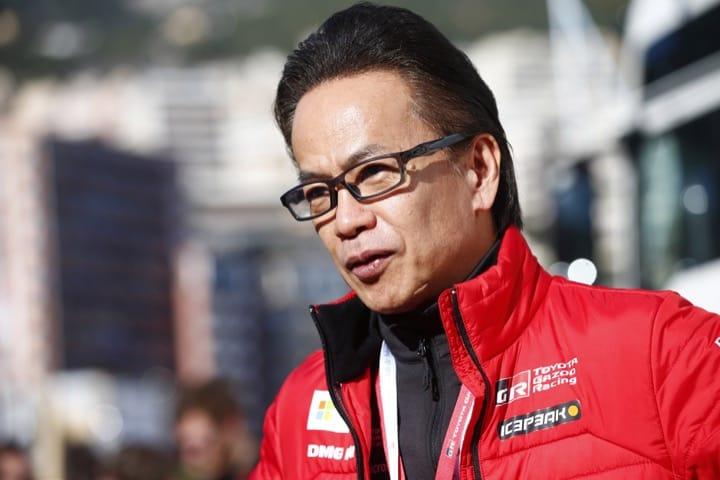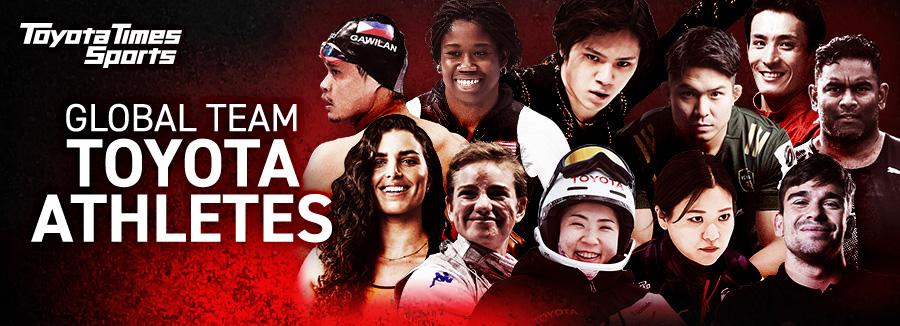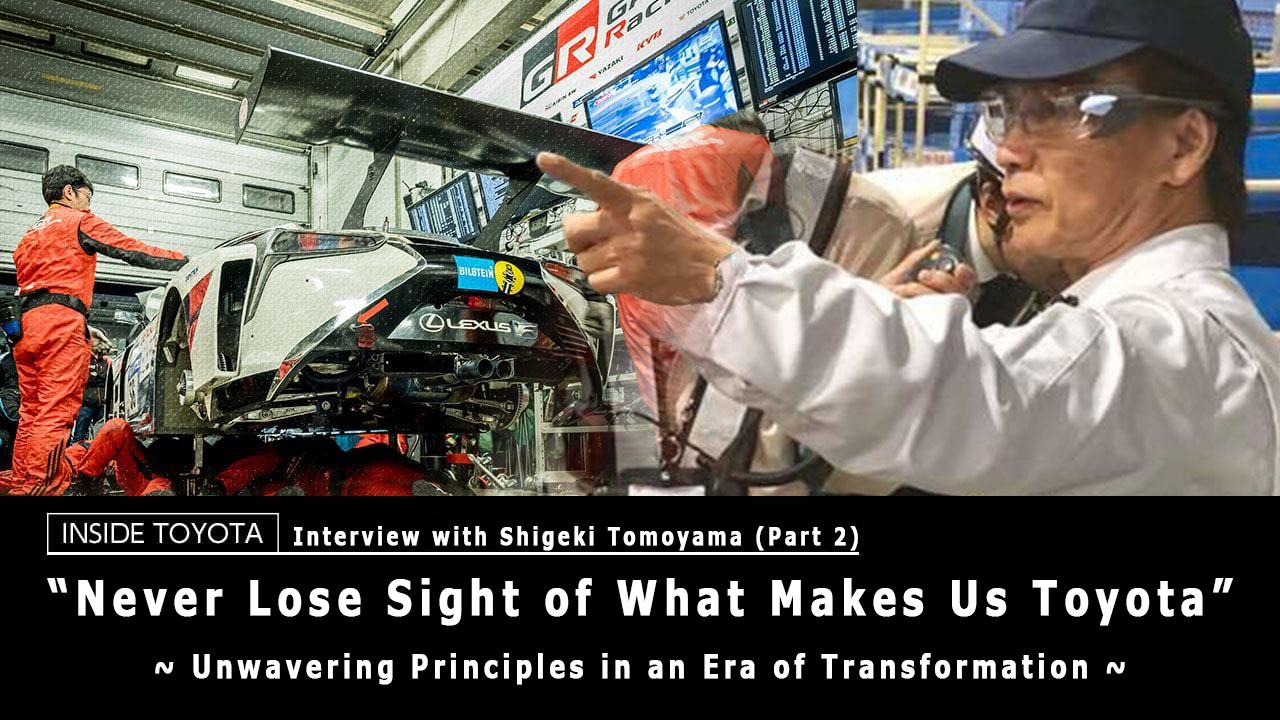
Even during this once-in-a-century period of transformation, Toyota sticks to its unwavering principles of things like the Toyota Production System.

“We will transform Toyota into a mobility company”
“The last car standing will be a car that’s ‘fun to drive’”
Both of the above quotes are from Toyota President Akio Toyoda. The first one was from a press conference he gave in the U.S. in January 2018 during CES (Consumer Electronics Show).
The second was something he said in an interview with Toyota Times Editor-in-Chief Teruyuki Kagawa in response to why Toyota makes sports cars.
To gain a deeper understanding of the meaning behind the statements, Toyota Times interviewed Executive Vice President Shigeki Tomoyama. Tomoyama, charged with both expanding the possibilities of mobility and creating sports cars, was likely to have his own unique interpretation, especially from the perspective of Connected Strategy and MaaS (Mobility as a Service).
Given the nature of these topics, it was decided that they would be best explored over two articles. In the first part, the topic will center more on what a ‘fun to drive’ car is; the second article will go deeper into what Tomoyama thinks about the push to become a mobility company.
*These articles were first published in the Japanese edition of Toyota Times in May 2019.
TPS exists to make our transition a strength
Q: In addition to GR and Toyota Connected Company, why does your role also have a relationship with TPS (Toyota Production System)?
- Shigeki Tomoyama
-
“Toyota Connected Company," “GR" and “TPS” are all essential areas for Toyota’s transformation. Connectivity will transform the automotive business, GR will transform car production, and TPS is the principle that’ll make those transformations “strong in the Toyota Way.” Connectivity allows cars to be more than just a product; it allows them to be a connecting point between customers and society. How can we provide attractive mobility services through this connecting point? This is the most important element for transforming from a “car company” to a “mobility company.” GR trains people and builds cars to offer good sports cars to the world. Presuming that the newest racing car is also the newest connected car, connectivity forges the software for vehicles, and GR forges the vehicles’ hardware. By combining the two, we can make truly fantastic cars. However, to offer a really good product, we must be able to mass produce it at competitive costs, lead times and with satisfactory quality in mind, which requires an endless series of improvements. This is where TPS comes in.
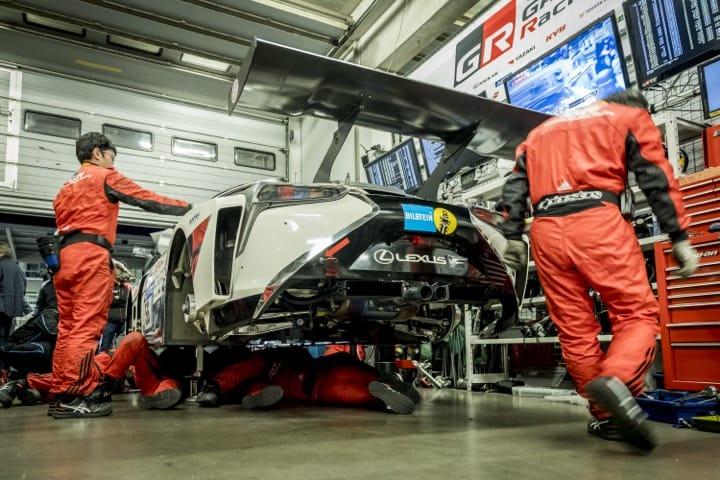
Especially in recent years, the customer’s sense of value has been shifting from tangibles to intangibles, so our “Just-in-Time” system cannot end when the car exits the factory, and must reach closer to the customer. We need connectivity for that. We can use the connection to monitor the conditions of the customer’s car and learn what they need at any given moment. This allows us to provide reliable “Just-in-Time” service 24 hours a day and 365 days a year. On the other hand, ever-growing customer expectations are constantly creating an unfilled gap between their demands and what we can provide, so we must continuously strive to reduce the gap. TPS is the foundation of both car production and our connected services. It is what makes us Toyota, and represents our strengths.
Without TPS, Toyota becomes just another company
Q: TPS has been at the forefront of Toyota’s business since last year. Why did you choose to do that now?
- Tomoyama
-
In 1991, I was transferred from the Production Engineering Division to the Operations Management Consulting Division. This division was established by former Executive Vice President Taiichi Ono, and operated as the center for TPS, and I reported directly to Assistant Manager Akio Toyoda (currently President) at the time. As Akio’s subordinate, I worked on everything from improving manufacturing sites to logistics improvement at dealers. Even then, my superior Akio was critical, saying, “Without TPS, Toyota will be just another company and we will have no future.” After becoming president in 2009, Akio spent the first five years overcoming the effects of the global financial crisis, recalls and the 2011 Great East Japan earthquake. The following five years were spent preparing to launch Toyota’s next generation. Then, in January 2018, TPS came to the forefront of Toyota’s business*. *TPS Headquarters was organized, including the Production and Sales Division with Shigeki Tomoyama as its Chief Officer. To survive this once-in-a-century period of profound transformation, we must firmly implement TPS not only in the area of production, but also in the areas of professional positions of sales and logistics. Furthermore, we must also improve our business capacity through and through from development, production and sales, to aftercare.
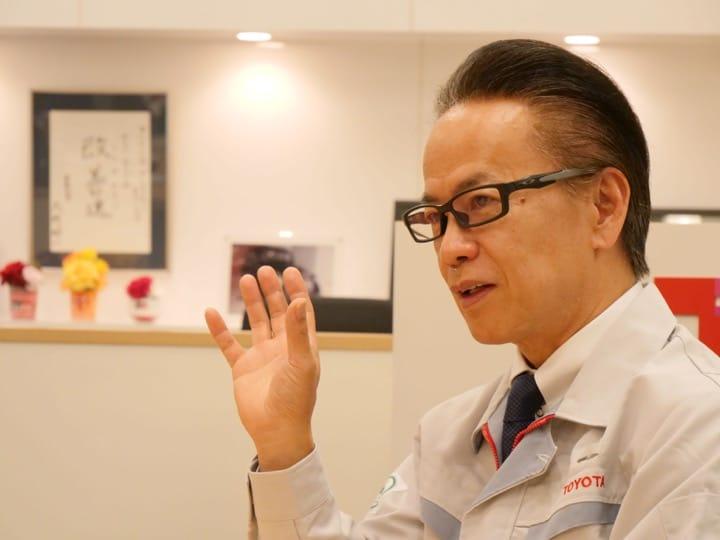
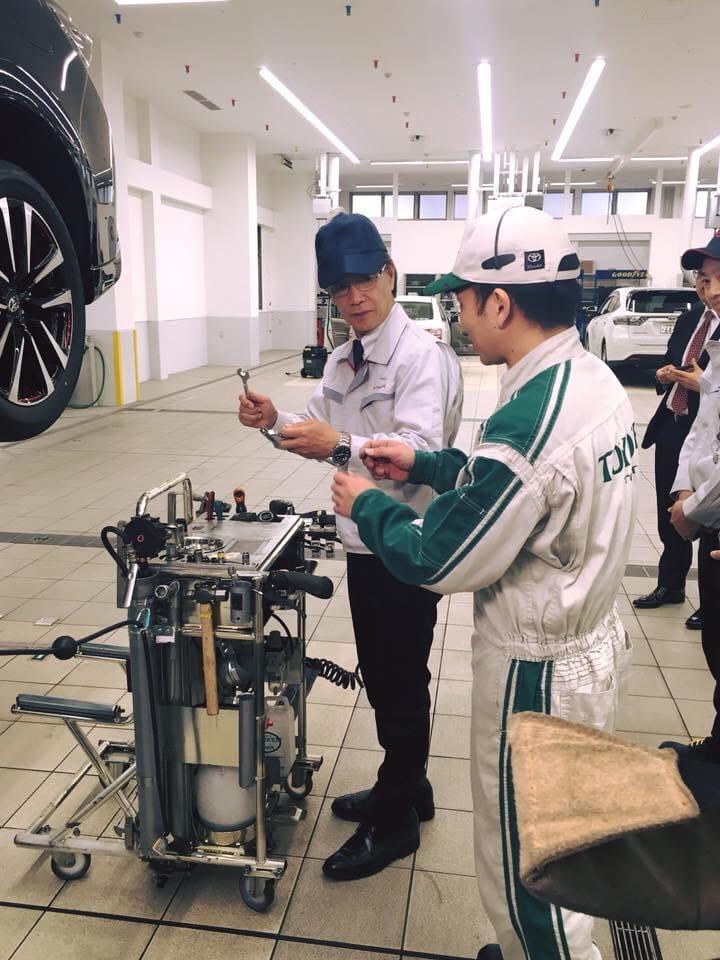
We returned after storming out on Mr. Son 20 years ago...
Q: After declaring the intention to become a mobility company in January 2018, Toyota teamed up with Softbank by that October. Is it true that 20 years ago you were in touch with Mr. Son (now Chairman, President and CEO of Softbank Group Corp.)? Do you remember your interactions with him from back then?
- Tomoyama
-
I remember very clearly. When we were working on implementing TPS at dealers in 1998, we realized that to improve cash flow we needed to quickly turnover the trade-in cars customers used as a down payment for purchasing new cars. However, it took weeks from trading in to going on display, and many used cars remained unsold for months. So we developed an “image-based system for used cars,” which allowed us to photograph used cars the moment they were traded in, and upload them immediately to start negotiating in person at showrooms or with a dealer over the internet.
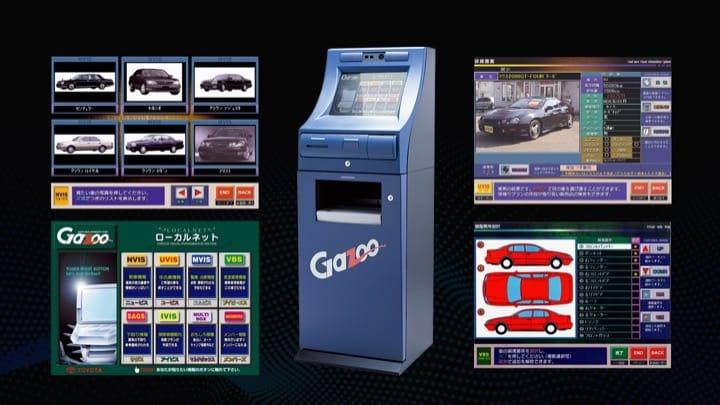
-
It was a revolutionary system for its time, but I wasn’t allowed to include “Toyota” when naming it because the internet wasn’t as widely used back then, so people in the company pushed back. Their thinking was that it was only really possible to sell cars with photos, so we had to reluctantly call the system “GAZOO,” taken from gazou (meaning “image” in Japanese). Despite company pushback, GAZOO got very positive feedback from dealers and expanded nationally. Around 60,000 used cars were consistently posted on the website with 3,000 new daily uploads. It was a great success. Right when we were running around from one dealer to another setting the groundwork to implement an image-based negotiation system for selling new cars as well, Mr. Son, who similarly had his eyes on selling cars over the internet, came to Toyota with a proposal to “institute a U.S. internet dealer as Toyota’s official system.” Mr. Son’s eloquent persuasion was starting to work on part of Toyota’s upper management. Akio and I became very concerned, thinking, “We can’t allow a troublesome third-party internet company to get between the maker and the dealer!”
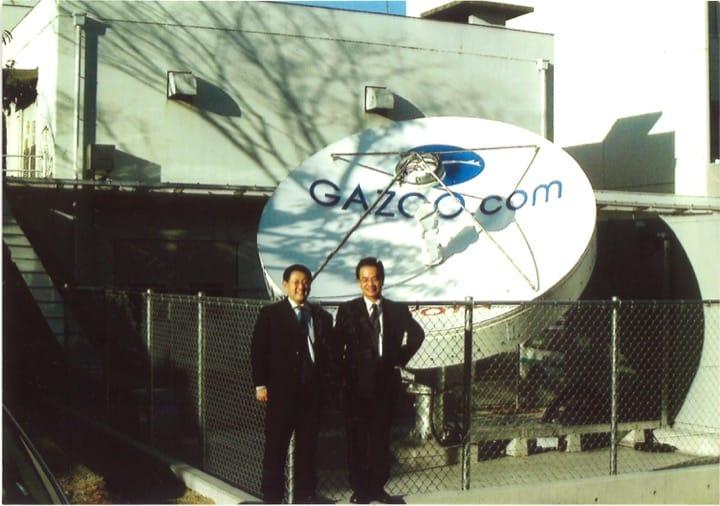
Akio was manager and I was assistant manager at the time, but we both went to visit Mr. Son so we could tell him that Toyota handles all of its business by ourselves, after which we stormed off. Looking back, I think we were young and very rude to Mr. Son, but he was extremely calm. He said he was “very sorry to hear that,” but “understood.” He completely withdrew after that. Toyota and Softbank had not been in touch since then. There are articles speculating that we are on bad terms, but we just haven’t had an opportunity to reconnect. If you were to ask me why we’re now teaming up with Softbank, both Akio and I are equally surprised. I think the situation surrounding the automotive business has changed that much over the past 20 years. And now, Toyota is also trying to transform.
Akio decides: Let’s team up with Softbank
Q: While working with leading ride hailing service providers overseas, President Toyoda came up with the phrase, “When the door opened, there stood Mr. Son.” Did something happen that triggered this memory from 20 years ago?
- Tomoyama
-
In the midst of the transition from private ownership of vehicles to a shared use model, tit will become increasingly critical to team up with leading ride hailing service providers that have control over registered drivers and an enormous amount of users. That’s why we have formed alliances with ride-sharing companies worldwide, including Uber, DiDi and Grab, but, no matter which company, their top shareholder’s name—Softbank—came up every time. I’m not sure if Akio remembered something from 20 years ago, but he decided to “team up with Softbank,” so we decided to pay another visit to Softbank at their corporate headquarters in Shiodome, and present our proposal. Interestingly enough, we found ourselves visiting with a Mr. Miyauchi (now Softbank President) and a Mr. Miyagawa (now Softbank Vice President), both of whom we met when we visited Mr. Son and his team 20 years ago. Mr. Miyauchi remembered us, and said nostalgically, “The time has finally come.”
Q: Why Did Toyota want to do it alone 20 years ago?
- Tomoyama
-
At that time, GAZOO was trying to create a direct line of communication with its customers. Our goal was to connect our customers with our dealers with us as the manufacturer. If, instead, we had consented to let an outside agency or company serve as the bridge, I think we wouldn’t have the present-day GAZOO (or any of Toyota’s internet business that later came out of GAZOO), and we would still be having to outsource Toyota’s strategy for connected vehicles. If that had that been the case, I don’t think we would have any future as a mobility company.
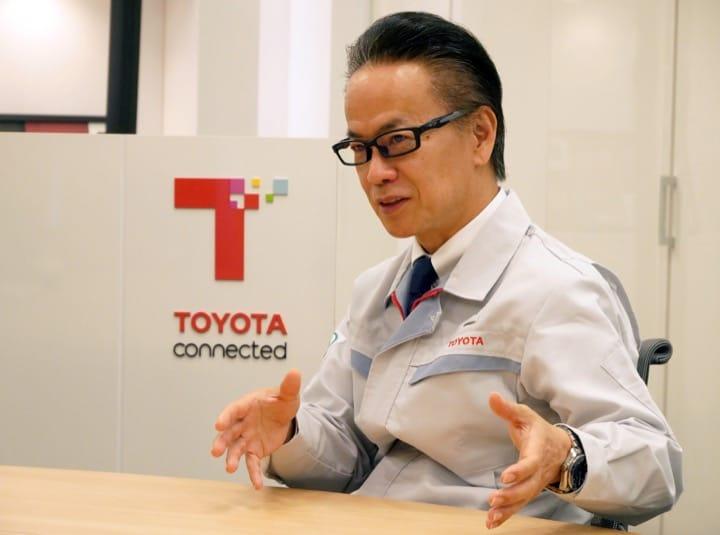
Q: In August this year, President Akio Toyoda visited Softbank’s corporate headquarters and President Masayoshi Son also visited Toyota’s headquarters. What did they talk about?
- Tomoyama
-
They discussed their strategies and visions with each other, and reassured each other that this isn’t a competition. While I can’t give you the full details of their conversation, I can say, for example, that Softbank explained how they make investments in up and coming companies around the globe, as exemplified by the choices of their Vision Fund. That isn’t one of Toyota’s strengths. However, starting with TPS, we have tangible assets and strengths including abilities to improve the company’s Genba-ryoku ("on-site competence"), mass produce high quality products at a reasonable cost, and provide satisfactory aftercare once they are out in the market. The combination of Softbank’s forward-looking portfolio (invested companies) and Toyota Group’s tangible strengths creates more paths for establishing a new mobility society. From those perspectives I believe that we can share benefits and visions long term.
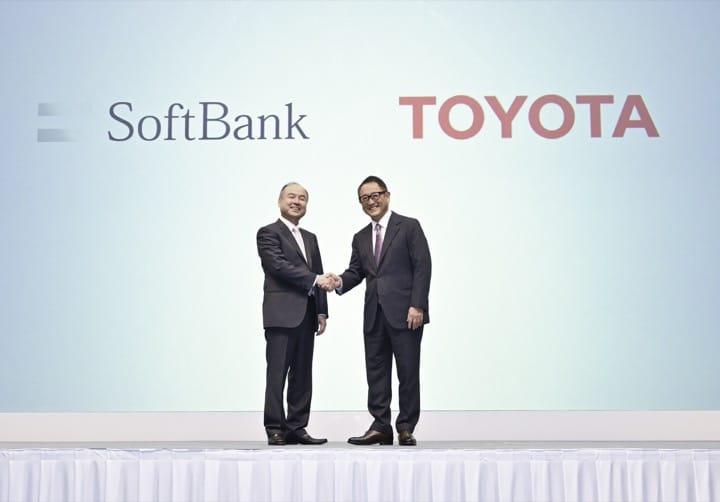
When you mix water and oil, you create something new called emulsion
Q: People sometimes refer to Softbank and Toyota as water and oil. How do you feel about working together?
- Tomoyama
-
It hasn’t been that long since we formed our joint company MONET Technologies in January this year, but by the end of March, we had already signed memorandums to service 17 local governments. We have already started to provide on-demand mobility services for three local governments and one company. On March 28, we held a bridging meeting for over 100 local governments and more than 200 companies. It does make me a bit nervous observing all this, but Toyota has never operated with this much speed and momentum.
When you mix water and oil, you create something different, like a dressing, called emulsion, and I’m hopeful that we can create a business unit that neither Toyota nor Softbank already have.
We made a pact in front of Kiichiro’s family altar
Q: 10 years after Akio became president, he formed the in January 2018. What were his concerns about maintaining the status quo?
- Tomoyama
-
In February 2018 when the Seven Samurai were brought together, we went to the Sakichi Toyoda Memorial House located at Kosai City in Shizuoka Prefecture, which is where Kiichiro was born, and made a pact in front of Sakichi and Kiichiro Toyoda’s family altar. I’ve never talked about this until now, but today is a special occasion (and for Toyota Times). First, the “Six Samurai” (not including Akio) declared, “Alongside President Toyoda, we pledge to dedicate our lives and put forth our best efforts to reimagine a new Toyota Group and improve the economy and society of Japan and the world.” Akio then responded by vowing to “Put the greatest efforts into fulfilling our duty through and through from beginning to end.”
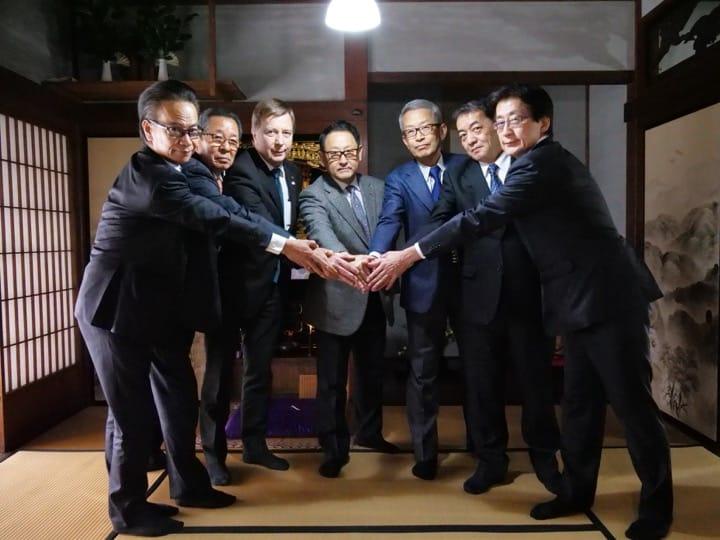
President Toyoda has a grand mission that no one else can carry out. Kiichiro Toyoda’s regrets and unfulfilled aspirations were passed on to President Toyoda, and he struggles with them every day with unwavering determination. We can’t carry out President Toyoda’s grand mission for him, but there is a way to fight together. We made a new pact to fight together with the same lofty aspirations. Kiichiro’s aspirations attracted many historically renowned leaders to his side. Now is the time during this major revolution that comes once in a hundred years for the “Seven Samurai” and many other leaders to come together and pass a rainbow- colored torch to the future. The next generations will be the judge in the years to come.
A king and a shogun are two different types of leaders
Q: Making a pact together shows a great deal of determination. How do the united “Seven Samurai” view the role of top management?
- Tomoyama
-
To simply answer that, it is a battle formation. In 1996, I remember Akio said to me, “I’ll be the king, and you’ll be the shogun” when he formed the C. S. Creation Department. He continued, “The king decides who to fight, and the shogun decides how to fight. The king also decides who wins or loses. Until then, the shogun must keep fighting.” We could call each other kings and shoguns as much as we want, but we were just the manager and assistant manager for an organization of 70 randomly gathered people back then. After 23 years, we became president and executive vice president, but we still maintain the relationship of “commanding leader” and “executing leader.” However, now we have six shoguns.
We can’t spend too much time making decisions especially in these difficult times. Decision making becomes time consuming because we have to be constantly thinking about whether or not we can do something, and if we want to do it, we have to figure out how. Situations continue to change while we continue to debate, and we end up stalling to wait and see.
The king’s job is to decide what the tasks are while the shogun’s job is to execute those tasks, and though it may sound extreme, the shogun shouldn’t disagree with the king’s decisions or his ways. These two different types of leadership must function efficiently. We need both the king and the shogun to survive these difficult times.
Passing the torch to successors in the next generation
- Tomoyama
-
You should ask Akio! He’s trying to survive one day at a time now. He’s desperately trying to stay on his feet. In addition to the usual competing manufacturers, he’s now facing IT giants and other friend and foe industries that are waiting for their opportunity to break into the automotive business. Meanwhile, customers’ preferences and values are rapidly changing. Therefore, he’s just trying to keep the Toyota Group and its over 370,000 employees as well as its supply chains alive under these harsh conditions. If we don’t survive, we won't be able to pass the torch to future generations.
Toyota must have uniform values
Q: It was rumored that there was a big gap in the perception of the current crisis level between top management and others during the annual spring round of wage negotiations. What do you think are the areas of challenge for Toyota?
- Tomoyama
-
The fear is that Toyota is becoming just another ordinary big corporation. It’s hard to define in words what constitutes being ordinary, but Toyota must have uniform values from top to bottom. I believe that is what has distinguished us from other companies. I’m glad that we were able to have a serious discussion regarding how to raise competitiveness in labor-management during this year’s negotiations. However, to be more competitive Toyota must have uniform values that no other companies have. One of these is TPS. We must minimize lead time for TPS. Moreover, we must expose any problems at each station or workplace every day and strive to improve. We must test the limits of our daily workload, regardless of fluctuating quantities or type of work, without decreasing productivity. These should be common practices as long as you work for Toyota, and we all must have uniform values across all personnel and occupations.
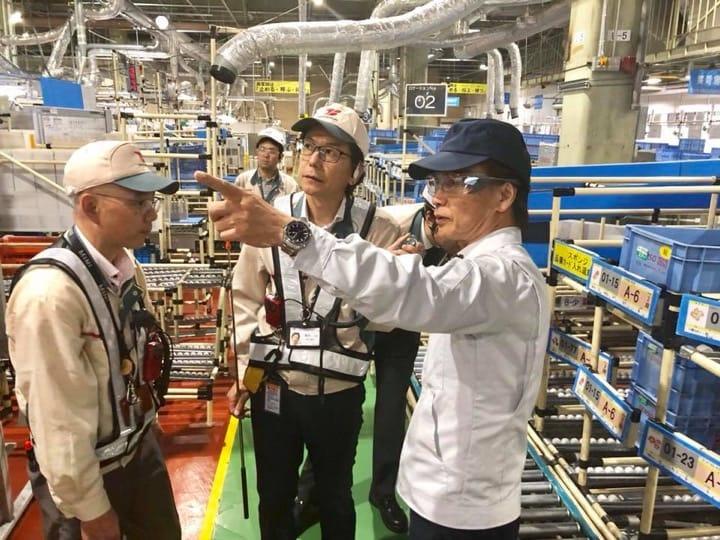
For example, regardless of how much easier it makes our lives, we can’t create any facilities, systems or methods that cause longer lead times or slow down improvements due to overlooked problems at the genba. Furthermore, we most certainly should help each other, so we must make workplaces larger and cross-train people in order to facilitate moving within neighboring stations or workplaces, depending on the workload. We must make the best use of time, promote productivity, and test daily workload limits not for the purpose of intensifying labor, but out of respect for humanity. I don't think there's any room for questions or debate about that. Some people believe that in the past five years, Toyota has entered a stable phase and is in no danger of collapsing anytime soon, but they’re absolutely wrong. What I fear the most is us losing sight of the unique values that unite Toyota. Companies are made of people. If the people are no longer special, then the company also becomes just another company. Then we will lose our unique competitiveness, and there will be no future for Toyota.
Q: Is there enough time?
- Tomoyama
-
I think so. The next two to three years will likely be the key. We have the “Seven Samurai” for this reason, and it is why we all work together to take on the challenge of transforming in many directions.
